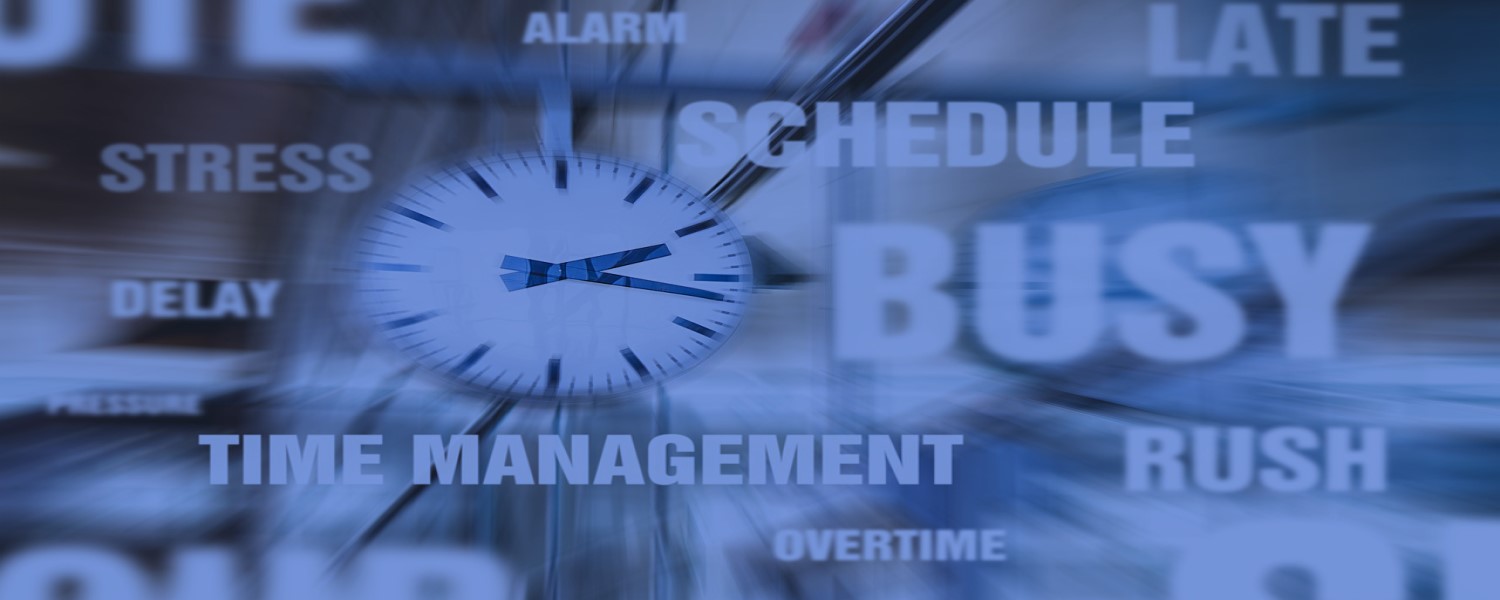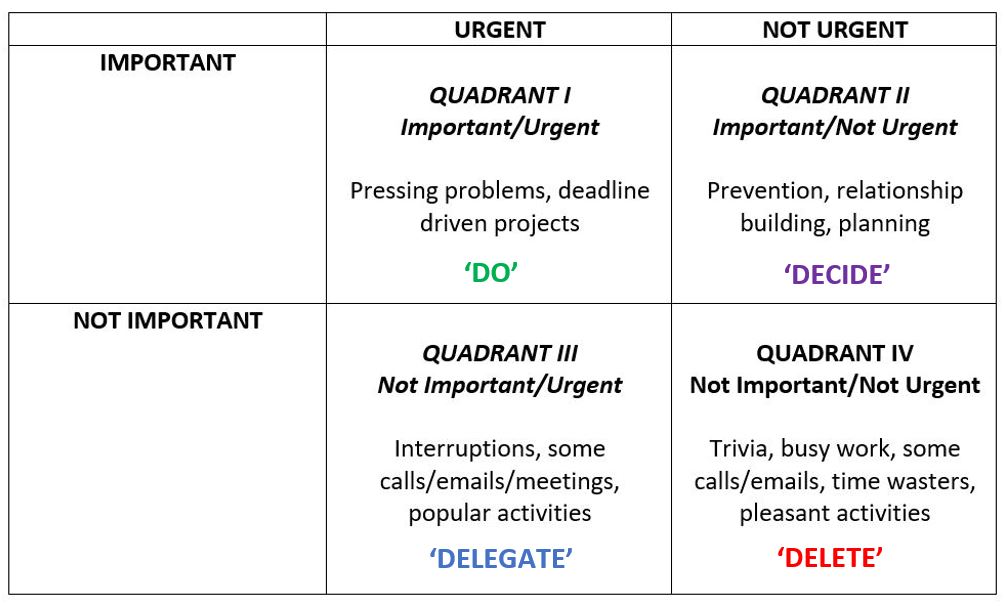Eisenhower Matrix: How to Prioritize Your Life Like Ike!
Until I did some research on him, I had no idea that former United States President Dwight D. Eisenhower was an avid painter. Apparently, he took up the hobby after being encouraged to do so by Winston Churchill, which resulted in him making over 250 paintings. It also seems that the man nicknamed ‘Ike’ was also quite a time management savant. Interestingly, Eisenhower was responsible for creating a tool that we will discuss in today’s blog post called the Eisenhower Matrix.
You may be familiar with a Gatorade commercial that aired in 1992 featuring basketball star Michael Jordan called ‘Be Like Mike’. I suppose that after you learn about the Eisenhower Matrix, you may want to ‘Be Like Ike’ when it comes to time management and prioritizing how you spend your time.
Why Time Management and Prioritization is Important
We can’t, nor should we try to, do everything in our lives. Trying to do too many things will just make us unfocused and ineffective. Those who are successful are able to both say no to opportunities that add no value as well as prioritize tasks in order to focus on the ones that make the biggest impact.
The Eisenhower Matrix is a great time management technique that you can use for how to prioritize tasks and activities in your life.

How the Eisenhower Matrix Works
The idea behind the Eisenhower Matrix is pretty simple and as Eisenhower was once quoted as saying: “I have two kinds of problems, the urgent and the important. The urgent are not important, and the important are never urgent”.
The idea is to take your tasks and place them into one of the 4 quadrants below.
The Eisenhower urgent-important matrix helps you evaluate tasks based upon their relative urgency/non-urgency and importance/unimportance, which allows you to prioritize them to figure out how to handle them.
The URGENT items are ones that need immediate attention, “now”. They are the tasks that act on us, are visible, insist on action, and many times are popular with others. They cause us to be in ‘reactive’ mode.
The IMPORTANT items have to do with results. They contribute to our mission, values and high priority long term goals. They cause us to be in ‘proactive’ mode.

How to Deal with Each Quadrant
Let’s now look at how we deal with items in each of the 4 quadrants:
Quadrant I – Important/Urgent – ‘DO’
This is stuff you will want to take care of A.S.A.P. as it is both urgent and important. For example, in Eisenhower’s case, it may have meant dealing with the Russians during the Cold War.
Quadrant II – Important/Not-Urgent – ‘DECIDE’
You will want to create space in your schedule for this stuff and make sure it gets done as it is important but not urgent. For example, this may be where Eisenhower put his painting hobby as it was important to help him relieve stress, but not urgent.
Quadrant III – Not Important/Urgent – ‘DELEGATE’
This is stuff that needs to be done soon but it is not super important. For example, instead of typing out a letter to the President of another country himself, Eisenhower likely dictated it and had his secretary do it. This is the type of task that you outsource or delegate.
Quadrant IV – Not important/Not Urgent – ‘DELETE’
This is stuff you don’t want to waste your time on because it is neither urgent nor important. For Eisenhower, an example of this may have been painting a picture of his wife for her birthday a year ahead of time.
“If we don’t know what’s IMPORTANT, we respond to the URGENT.”
That, according to Stephen Covey, who wrote about the Eisenhower Matrix in his wildly popular self-improvement book, The 7 Habits of Highly Effective People.
Effective people stay out of quadrants III and IV and shrink down/eliminate tasks in quadrant I so that they can spend the majority of their time in quadrant II. The idea is to get time from quadrants III and IV to make time in quadrant II because you cannot ignore the tasks in quadrant I.
Coveys suggested that by spending more time by proactively planning and preventing in quadrant II, quadrant I will eventually shrink in size.
Another great point he makes is to engage in long-range planning. If you only engage in daily planning, you are only focusing on the now which leads you to focus on URGENT tasks. This will cause you to miss the important things that can only be seen by taking a “big picture” perspective.

He may have been a savant when it came to time management
But when it came to painting Dwight D. Eisenhower would most certainly never have been mistaken for Michaelangelo.
Back in 1967, his works were on display at an art museum in New York City when he was asked about them by a reporter.
His response:
“They would have burned this sh*t a long time ago if I weren’t the President of the United States.” 1
So, when it comes to time management, you will want to “Be Like Ike”, but when it comes to painting…”Be Like Mike” or Michelangelo more specifically!
Until next time, keep using the Eisenhower Matrix and as always…PYMFP!
–Rick
P.S. Wanna know more? Check out the entire book!
Use it or Lose It
To use the Eisenhower Matrix, put each activity or task into one of the cells in the matrix.
Once you have done that you can deal with items in each quadrant as follows:
Quadrant I – Important/Urgent – ‘DO’
Quadrant II – Important/Not-Urgent – ‘DECIDE’
Quadrant III – Not Important/Urgent – ‘DELEGATE’
Quadrant IV – Not important/Not Urgent – ‘DELETE’
When to Use It
Use the Eisenhower Matrix as a time management tool to help you prioritize your tasks and activities.
What Do You Think?
Do you use the Eisenhower Matrix? If not, after reading this blog post, is it a tool you will use in the future? Please share your thoughts in the comments below!
If you enjoyed this post, it would mean the world to us if you shared it with people you care about via any of the social media platforms below!
Popular Previous Posts:
Dwayne Johnson Quotes: Words of Inspiration from the Rock
This is How to Follow Up to Stand Out From the Crowd
This is How to Stick with Habits Using the Paper Clip Strategy
101 Life Principles We All Know, But Keep Forgetting
References
http://mentalfloss.com/article/538462/facts-about-dwight-d-eisenhower
The 7 Habits of Highly Effective People by Stephen Covey
1 https://www.history.com/news/10-things-you-may-not-know-about-dwight-d-eisenhower

Unfortunately, Eisenhower has become one of our most under-rated presidents, which he does not deserve. He knew when to act and when to talk. His military background prepared him well. I really like the concept of 4 D’s.
My examples:
I – Take the car to the mechanic and get fixed that oil leak that started puddling on the garage floor.
II – Call the plumber and set up a time for him to visit and repair the dripping faucet.
III – Have an assistant prepare the slide show presentation, then you review it for content and accuracy.
IV – Junk mail, advertising, that note from Cousin Susan who you have not heard from in 30 years which invites you to her kid’s graduation in another state. Using a telephone answering machine fits right into this category.
Where is Ike when we need him today? He would take names. kick ass, and straighten out Washington in about 3 weeks. And then bring in the heavy artillery.
Hi Dave, Yeah he was an impressive guy for sure. Great examples, I laughed at the Cousin Susan one, haha. Be like Ike, be good and be careful! Take care, Rick
I like this use of quadrants for prioritizing tasks; however, using lists has always worked for me. I do make sure I get the more important tasks done first. Thanks for this idea. I might try it.